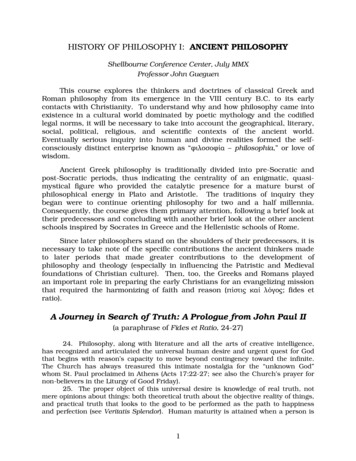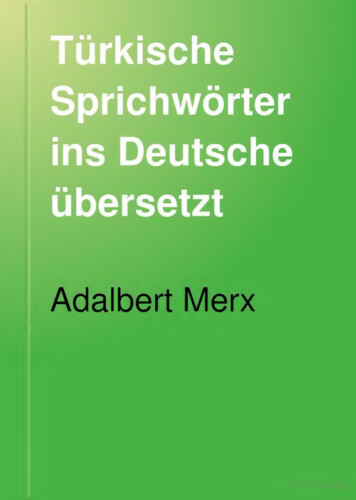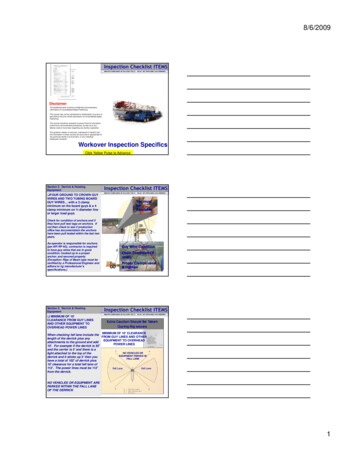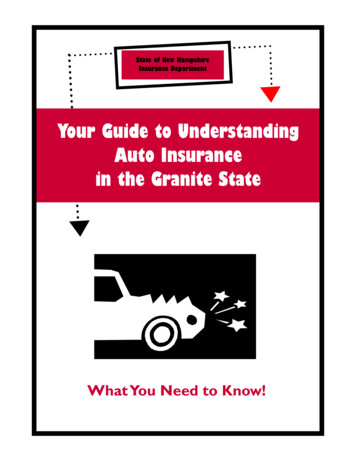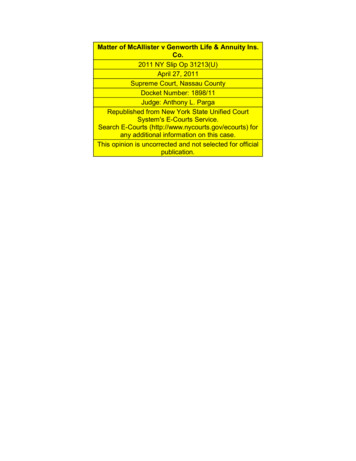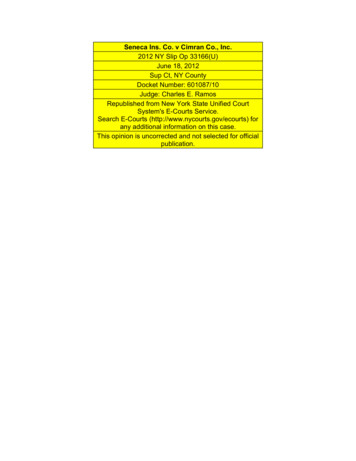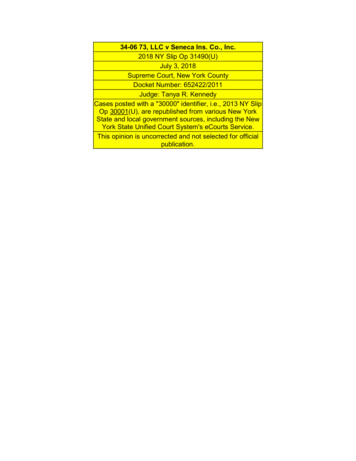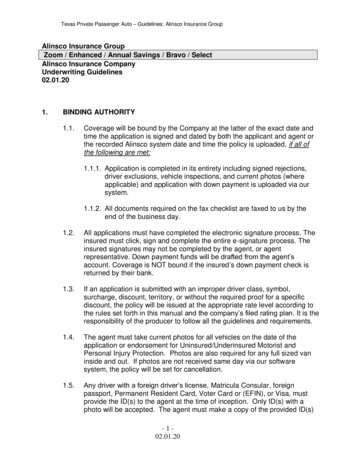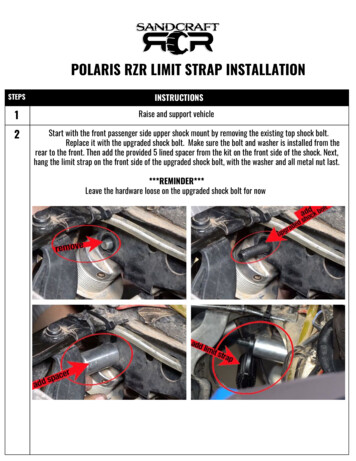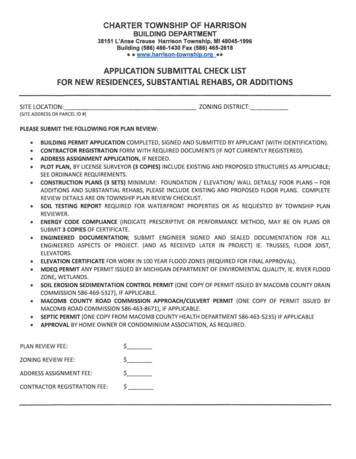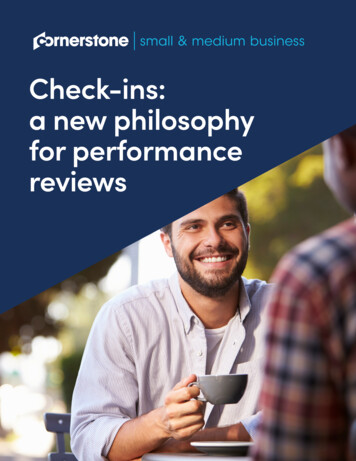
Transcription
Check-ins:a new philosophyfor performancereviews
Table of ContentsI. The end of annual reviews & beginningof continuous feedbackII. A new philosophyIII. Anatomy of check-ins3
IntroductionDefinition: performance reviewA formal discussion between employee and manager to discussthe degree to which the employee reached goals set during theprevious review cycle (typically one year before). Ratings ofaccomplishments are given and new plan of action is determinedfor the upcoming year.Definition: Continuous performance management, check-insOngoing one-on-one conversations between managers andemployees about work progress, goals, performance to date, andplan of action going forward, held at regular intervals throughoutthe year. Conversations, aka “check-ins,” can be recorded to builda broader view of accomplishments and progress to developthe employee.Imagine an interrogation room. Two opponents sit across a tablefrom one another, and the air is full of tension. If this were anold-fashioned detective movie, the police officer would grill thesuspect until he cracked.For decades, the annual performance review was a scenario nottoo different from this imagined scenario. Once a year, managerand employee would sit across from one another in a formalmeeting and discuss everything accomplished or missed overthe entire year with point values assigned, goals reviewed, andcompensation determined.4
The real crux of an annual performance review is that, for the employee, it’s anindefensible position to be in. The year is over and the manager is likely herewith an evaluation done and future determined.It’s no wonder that 95% of employees are dissatisfied with the annualreview process and 90% don’t believe they provide accurate information.That’s why smart companies are changing the annual performance review.Instead of a single evaluation, companies are switching to a culture ofcontinuous performance management with frequent, recorded check-ins.When managers provide daily feedback (versus annual feedback),their employees are:- 6.0 times more likely to strongly agree that they receivemeaningful feedback- 3.6 times more likely to strongly agree that they are motivatedto do outstanding work- 3.0 times more likely to be engaged at workThis ebook will take you through the new philosophy of continuousperformance management with check-ins and practical tips for how toimplement it within your company.Let’s get started.5
The new philosophy of feedback: a fundamental shiftBuilding a culture of continuous feedback represents a fundamental shiftin the philosophy surrounding feedback and the relationship betweencompany and employee. Here’s the underlying difference between performance reviews and continuous performance management:Philosophy of annual performance reviews: The company musthold the employee accountable and assess the employee’s value.Philosophy of continuous performance management: Employeeswant to perform well, but they also want to improve, grow, anddevelop. The company’s role is to support the employee on thisjourney (to mutual benefit).Companies embracing the new philosophy are building semi-formal“check-ins” into their structure and processes. Check-ins represent aconversation, held at regular intervals, where feedback and notes arecollected to record progress and build a plan of action for the future.The benefit of doing Check-ins on goalsCheck-ins allowFrequent check-tracks progress,both the employeeins progressidentifies obstacles,and manager toon projects andand ensures openbe empoweredoverarchingcommunication onto influencegoals can identifynext-steps to beproject directionobstacles and allowtaken.throughout the yearfor rapid courseand performancecorrection. This willexpectations.keep employeesEmployees don’tworking towardshave to wait fora productive goalapproval, butand help managersinstead engage inidentify and developthe process.low performers.Engagement(feeling ofprogress)Check-inconversationsbuilds a strongerrelationshipbetween employeeand manager.83 per cent ofcompanies saythey see quality ofconversations go upwith more frequentcheck-ins. 2ValueInvestmentCheck-insdemonstratethe value yourcompany places inemployees. Thisvalue is open andtransparent toeveryone at everylevel. Feedbackand conversationsamount to morethan a “checkedbox.” You areinvesting in youremployees.
The writing is on the wall. Continuous feedback with recorded check-insis building a better company culture with better ROI.The anatomy of a check-inCheck-in conversations can cover a range of topics, but largely fallinto two general categories: performance and development. Theseconversations also provide an opportunity to collect data more frequently,with a more formal format than an unstructured conversation, butwithout the rating and pressure of a full performance review.Performance check-ins: conversations are focused on goals andspecific projects. While managers want to take the opportunity toacknowledge successes and offer course correction and developmentopportunity for any missed marks, let employees guide the conversationDiscussion topics may include: Status of short-term goals and long-term projects Recent accomplishments Revising goals with employeeDevelopment check-ins: conversations encompass a larger sectionof time, usually a quarter, with a focus on needs of the employee, skillgaps, development needs, and personal career goals. Discussion topicsmay include: Status of learning and courses in progress Training requests tied to professional or personal development goals How to achieve employee’s career goalsTiming of check-ins will depend on the complexity of goals and tasksand the culture you want to cultivate within your company.7
PiiQ check-in scheduling screenWho initiates the check-in: Check-ins should be empowering andcollaborative for both manager and employee. Initiating a check-inconversation should be open to either party; however, a supportive toollike PiiQ can help facilitate the conversation.More than just a conversationA truly productive check-in is more than just a quick chat over coffee inthe breakroom. Check-in conversations provide an opportunity to discussperformance and development, and to collect data to be integrated intothe employee’s overall performance review.8
Using a tool can be helpful to keep record of all notes and action items to be used as feedback.Self-reflection: Employees are empowered to use check-ins for selfreflection and to direct conversations with their manager. The employeecan direct the conversation based off of the notes captured and discusswhat went well, what could be improved, and steps for the future.More meaningful performance reviews: If the company chooses to doan annual performance review in addition to check-ins, the data collectedwill provide a more accurate and meaningful reflection of the previousyear’s accomplishments and opportunities for improvement. Check-insensure that there should be no surprises to either manager or employee;frequent communication and recorded notes make the processof reviewing a more productive experience for both.9
SummaryThe underlying philosophy surrounding feedback and performance reviewsis changing. Check-ins and continuous learning and feedback are producingemployees who are more satisfied and engaged within their company.You’ve worked hard to attract top talent to push your company forward,but now the challenge is how best to retain that talent. Turnover is afinancial drain for several reasons, including loss of skills, productivity,knowledge, and the time and resources it takes to refill that position. Perrecent research by Deloitte, Adobe reduced voluntary turnover by 30% byimplementing a continuous feedback culture within their company .Not only will your company hold onto top performers, but regular checkins will help you develop low performers. Companies without a talentmanagement strategy waste up to 34 days each year dealing withunderperformers. Check-ins will help hold low performers accountable anddevelop a plan of action for course correction.Check-ins will help your company keep those top performers and developthem even further, while helping to course correct lower performers.Multiple touch points increase engagement and development, whilereducing the costs of turnover and low-performers.Cornerstone has talent management solutions for all business needs,from simple to complex. Talk to one of our experts to find the rightsolution for your company. Request a demo.1. l the annual performance review.html2. R eengineering performance management: How companies are evolving PM beyond ratings, NeuroLeadership Institute / David Rock, Beth Jones, and Camille Inge, 2015.3. Bersin, Deloitte Consulting LLP, 20174. J ohn Skabelund. “Boost Your Bottom Line with Better People Management.” Reliable Plant. Accessed athttp://www.reliableplant. com/Read/198/bottom-line-managementStay connected:
management strategy waste up to 34 days each year dealing with underperformers. Check-ins will help hold low performers accountable and . Cornerstone has talent management solutions for all business needs, from simple to complex. Talk to one of our experts to find the right
